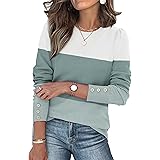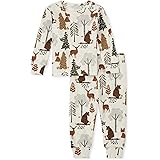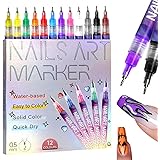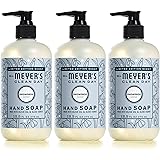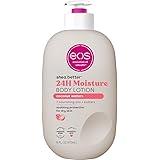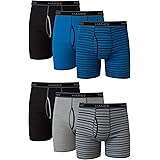Are you looking to elevate your everyday style, blending comfort with a touch of sophistication that transcends traditional dress codes? The accompanying video explores the fascinating emergence of formal streetwear, a style concept initially coined in late 2023 as a more fitting alternative to the often uninspiring “semi-formal” or “business casual” labels. This unique aesthetic is rapidly capturing attention, and for good reason: it represents a refreshing approach to modern menswear, where individual expression is prioritized without sacrificing an air of polish.
1. Understanding the Essence of Formal Streetwear
At its core, formal streetwear is a seamless fusion. It takes the relaxed, trend-driven foundation of traditional streetwear—think comfortable silhouettes, practical elements, and a focus on self-expression—and interweaves it with the refined characteristics of formal attire. Imagine a sculptor, expertly chiseling away at two distinct blocks of marble, eventually merging them into a singular, harmonious masterpiece. This style achieves an effortless look that manages to be both approachable and incredibly chic. It’s about finding that sweet spot where a casual sensibility meets an elevated presentation, creating outfits that feel authentic yet considered.
Unlike rigid dress codes, formal streetwear invites experimentation. It acknowledges that modern life demands versatility, allowing for ensembles that transition smoothly from a creative workspace to a sophisticated evening event. The term itself gained significant traction, especially on platforms like TikTok, indicating a widespread yearning for a more descriptive and inspiring label for this evolving fashion trend. It’s an acknowledgement that the old definitions no longer quite fit the contemporary wardrobe.
2. Decoding the Aesthetic: What Formal Streetwear Looks Like in Practice
To truly grasp formal streetwear, it is helpful to examine both stellar examples and common misconceptions. As seen in the video, styling by experts like Nakhya for Totem Brand Co. provides exceptional insight. Outfits featuring pieces like a Needles cardigan, an Engineered Garments blazer, Totem overpants, and Paraboot shoes showcase this blend perfectly. Here, the structure and refinement of the blazer are juxtaposed with the relaxed fit of the overpants and the inherent coolness of the cardigan, all anchored by classic formal footwear. This balance is key; the “streetwear foundation” remains, but is skillfully elevated by more formal components.
Conversely, the video also highlights what formal streetwear is *not*. An outfit dominated by shorts, a casual hat, and a hoodie, even with formal shoes, leans too heavily into the casual realm. It’s like trying to mix oil and water without an emulsifier; the elements simply don’t integrate to create the desired effect. The goal is a synergistic blend, not merely throwing on a single formal item with an otherwise entirely casual look. The entire ensemble must communicate a deliberate, elevated casualness.
3. A Retrospective: The Evolution of Modern Menswear
How did we arrive at the current prominence of formal streetwear? The fashion landscape has undergone significant shifts. The era between 2015-2020 was famously dominated by “sneaker culture.” Certain highly coveted sneakers, like the Chicago 1’s or Tom Sachs releases, acted almost as a style trump card, capable of making any outfit “stylish” simply by their presence. This was followed by the rise of New Balance and Sambas, perpetuating a cycle of sneaker-centric trends.
However, an observable shift has taken place. Today, there is a clear move away from sneakers dominating an outfit. Instead, formal footwear is enjoying a resurgence. Loafers, boots, and other classic shoes are no longer just for formal occasions; they are being integrated into diverse everyday looks. This transition isn’t about discarding sneakers entirely, but rather about a broader appreciation for footwear that complements an outfit rather than overpowering it. It’s like replacing a bold, singular painting in a gallery with a carefully curated collection where each piece enhances the others. The visual comparison in the video between youth fashion in 2014—characterized by overtly branded, hype-driven pieces—and 2024—showcasing more curated, loafer-based looks—vividly illustrates this evolution.
4. The Maestros of Style: Influencers and Pioneers of Formal Streetwear
No discussion of modern fashion trends would be complete without acknowledging the individuals who shape them.
- A$AP Nast and Tyler the Creator: A$AP Nast, a member of the A$AP Mob, is widely recognized as a significant trailblazer in blending streetwear with traditional menswear. From 2017 to 2022, his outfits were consistently lauded as some of the best in the rap community. His influence, as the video highlights, even extended to Tyler the Creator, sparking a notable “style feud” in May 2020. This rivalry, though contentious, underscored the impact of Nast’s pioneering approach, making stylistic choices like leopard print sweater vests and specific bucket hat pairings mainstream.
- Thelonious Monk: A Visionary Ahead of His Time: Long before modern streetwear, figures like jazz legend Thelonious Monk exhibited a truly revolutionary blend of formality and casualness. His 1950s ensembles, featuring a beanie with a checkered blazer or baggy untucked shirts with unconventional headwear, were decades ahead. It was like seeing an artist paint in a style that wouldn’t be invented for another 50 years. His baseball caps, worn casually, were a stark departure from the norms of his era, foreshadowing the relaxed approach to headwear that defines much of today’s casual and formal streetwear.
- The “Eclectic Grandpa” Trend: The rise of “Eclectic Grandpa” as a trend further illustrates this maturing fashion sensibility. This aesthetic, described as dressing like someone who has spent a lifetime curating a unique collection, emphasizes colorful knitwear, tweed, loafers, patterned shorts, and classic accessories. Pages like Gramparents, which have been documenting stylish older individuals since 2016, provide a rich source of inspiration, proving that timeless style is often found in those who dress for themselves, effortlessly blending comfort, quality, and individual flair.
5. Comfort Meets Style: The Future of Formal Footwear
One of the persistent challenges with traditional formal footwear has been comfort. The narrator’s personal anecdote about enduring hours in uncomfortable loafers at a flea market resonates with many. This discomfort has historically been a significant barrier to the widespread adoption of formal shoes in everyday wear, especially for those accustomed to the cushioning of sneakers. However, innovation is quickly bridging this gap.
The industry is seeing a surge in “hybrid footwear” and experimental material compositions designed to offer both sophistication and supreme comfort. Examples include:
- After Pray Loafers: This Korean brand has integrated elastic band details on the heel and uses soft sheepskin leather, directly addressing common pressure points and enhancing wearability.
- Junya Watanabe x New Balance Collaborations: Set to release later in 2024, these collaborations represent a high-fashion approach to integrating athletic comfort into formal-leaning designs.
- Plasticana Gardaona Clogs: Made from hemp plastic in France and Morocco, these clogs boast an easy slip-on design, waterproof properties, and remarkable comfort. Their unique appearance, often mistaken for boots when worn with trousers, exemplifies how material innovation can redefine perceptions of formal footwear.
6. Curating the Formal Streetwear Wardrobe: Brands and Sustainability
For those looking to dive deeper into formal streetwear, identifying brands that embody this ethos is essential. The video introduces several notable brands, each contributing a unique perspective:
- German Brands: Outta Time (established 2019, known for tone-on-tone trousers and jackets).
- Japanese Brands: Jan-Ye (Fall/Winter 2023 collection “Metagi” inspired by Japanese hunters) and Auralee (renowned for extensive research into high-quality raw materials and original fabric development).
- British Brands: Sage Nation (established 2020, blends Japanese and British heritage, focuses on traditional materials and construction in London) and J.L.A.L. (Jean-Luc Ambridge Lovell’s brand, known for technological innovation and experimentation).
- Korean Brands: Curated Parade (established 2021, based in Seoul, known for structured patterns).
- New York-Based: SK Manor Hill (designs inspired by vintage garments, made in NYC with natural fiber fabrics from Europe and Japan).
- London-Based: Omar Afridi (menswear by Hayato Ichimori and John Kikutake).
The role of headwear is also pivotal, as demonstrated by these stylists. Hats—from berets to beanies to quality caps—are often the finishing touch that makes an outfit feel complete, adding a layer of personal character and flair. It’s a small detail that makes a big impact, much like the perfect accessory completes a sophisticated ensemble.
7. The Lasting Impact of Formal Streetwear
The growing popularity of formal streetwear is more than just a fleeting trend; it reflects a broader cultural shift towards versatility, comfort, and personal expression in fashion. This style resonates deeply because it offers a pragmatic yet sophisticated solution for contemporary living. Whether one is layering a crisp blazer over a graphic tee for an unexpected contrast or pairing meticulously tailored trousers with sleek, comfortable loafers, formal streetwear seamlessly merges the best aspects of two previously distinct fashion worlds. It allows individuals to present themselves with confidence and ease, navigating diverse social and professional environments without feeling constrained by outdated sartorial rules. The flexibility it affords in personal styling, combined with an increasing focus on sustainable and comfortable garments, ensures its continued relevance and expansion into an even broader audience.


